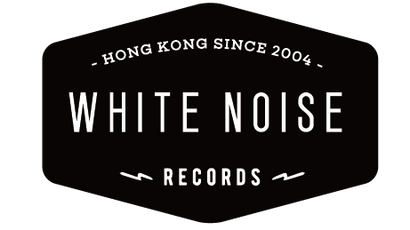In a world where chaos seems to be in control more often than not, music can occasionally be a temporary respite; and at best, a form of salvation.
This is the transcendent realm of Okonkolo: Yoruban Santeria music like you have never heard before. Okonkolo transports listeners to another realm; a spiritual dance with gods beyond our grasp, held together by rhythm, passion, and musical virtuosity.
The group is the life’s work of Newyorican percussionist and Yoruba priest Abraham “Aby” Rodriguez. His group released 2016’s Rezos, a gorgeous 10-Inch EP, followed by 2018’s full length debut Cantos on Brooklyn’s Big Crown Records.
These releases were like nothing anyone had heard before; producer Jacob Plasse took the traditional drums and vocal recordings and layered strings, brass and guitars over them. The result are the gorgeous and groundbreaking renditions of Santeria / Yoruban spiritual music heard on Cantos.
We invited Okonkolo to Diamond Mine Studio to record a few of these songs for our “Live at Diamond Mine” video series and they performed them in their original form: just drums and voices. The moment they began singing the intensity and passion of the group took the air out of the room. After experiencing this first hand and editing these videos to share with the world we decided to showcase these songs as they were originally recorded. With that, we present Okonkolo’s new EP Oru Cantando, a collection of traditional Orisha music.
Featuring eight songs, each of the group’s religious epiphanies on Oru Cantando follow a similar path, with transcendently hypnotic results. As with all Santeria ritual musical accompaniment, the 3 bata drums- the iyá, the itótele, and the okónkolo- are at the center of all offerings, played by Rodriguez, Gene Golden and Xavier Rivera. Building on these rhythms, vocals play an equally important role in the proceedings, sung in Yoruba, contributed by Aby and the powerful female voices of Amma McKen and Jadele McPherson.
While Santeria / Yoruban spiritual music is generally associated with Cuba in this hemisphere (and also Bahia, in Brazil), Rodriguez does not fit the traditional pedigree. “I’m an American,” he proudly admits, with a smile. “A Puerto Rican from New York. The Cubans I know always ask, ‘How can you play this?’ And I tell them, ‘Don’t ask me, ask God.”
The Santeria religion endured the transatlantic slave trade from Africa to the solares of Cuba and arrived in New York City by way of Caribbean migrants who sought a better life in the barrios of the Bronx and Brooklyn. And New York is where Aby Rodriguez first came in contact with Plasse. “We met in the early ‘90s, doing salsa gigs over at Plan B in the Lower East Side,” Plasse recalls. “After I had played there a couple times, Aby told me I should come later the next week, because the first part of the show was going to be different. Needless to say, I came early to see what I wasn’t being included in!”
He continues, “Abraham was doing a tambor for Chango. I had never seen anything like it. In Cuba, I had gone to some amazing tambors, but somehow what Aby was doing was different – it was the bata repertoire but with his own subtle New York doowop thing happening. And in a salsa club no less! It was beautiful and unique, and I wanted to figure out a way to collaborate, even if I had to wait more than 10 years to do it.”

![Minuano - Love Logic [PRE-ORDER, Colored Vinyl Release Date: 1-OCT-2025]](http://whitenoiserecords.org/cdn/shop/products/Minuano-LoveLogic2_{width}x.jpg?v=1641548842)


















![Glass Beams - Mahal [PRE-ORDER, Vinyl Release Date: 17-May-2024]](http://whitenoiserecords.org/cdn/shop/files/glass-beams-mahal-pre-order-vinyl-release-date-17-may-2024_{width}x.webp?v=1709096397)
![Glass Beams - Mahal [PRE-ORDER, Vinyl Release Date: 17-May-2024]](http://whitenoiserecords.org/cdn/shop/files/img99674_glass-beams-mahal-pre-order-vinyl-release-date-17-may-2024_{width}x.webp?v=1709096400)
![Minuano - Spring Lovers [PRE-ORDER, Vinyl Release Date: Mid March-2025]](http://whitenoiserecords.org/cdn/shop/files/minuano-spring-lovers-pre-order-vinyl-release-date-mid-march-2025_{width}x.jpg?v=1731929259)
![Minuano - Spring Lovers [PRE-ORDER, Vinyl Release Date: Mid March-2025]](http://whitenoiserecords.org/cdn/shop/files/img76042_minuano-spring-lovers-pre-order-vinyl-release-date-mid-march-2025_{width}x.jpg?v=1731929263)












![Fishmans - Uchu The Best of Fishmans [PRE-ORDER, Vinyl Release Date: 24-July-2024]](http://whitenoiserecords.org/cdn/shop/files/fishmans-uchu-the-best-of-fishmans-pre-order-vinyl-release-date-24-july-2024_{width}x.jpg?v=1707451813)




![前田美波里 Bibari Maeda - First [PRE-ORDER, Vinyl Release Date: 3-Dec-2022]](http://whitenoiserecords.org/cdn/shop/products/E5_89_8D_E7_94_B0_E7_BE_8E_E6_B3_A2_E9_87_8C-bibari-maeda-first-pre-order-vinyl-release-date-3-dec-2022_{width}x.jpg?v=1661665941)

















































